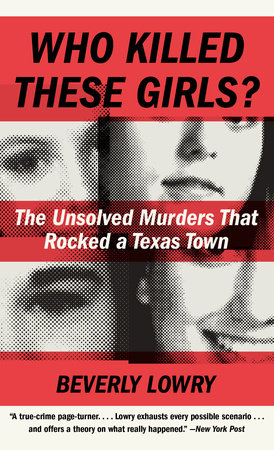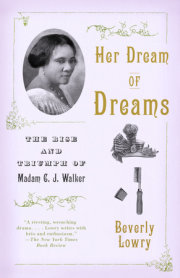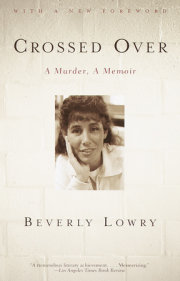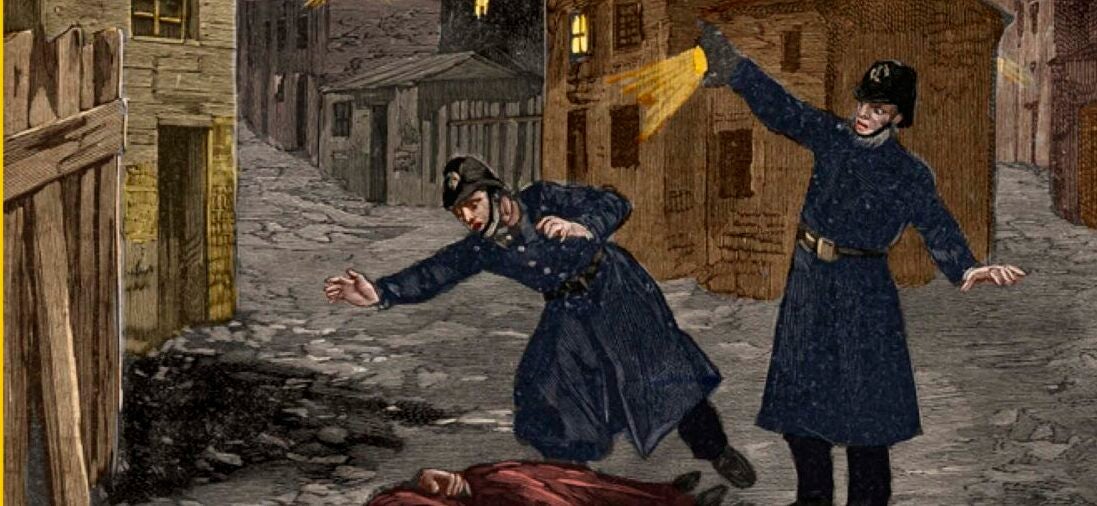December 6, 1991
When the call came in, Austin Police Department’s Sgt. John Winston Jones was the only homicide cop on the street. That’s how small and safe a city Austin was back then. Close to midnight on a Friday night and Jones was it. When his mobile rang the first time, he was on the other side of town, at Airport and Martin Luther King boulevards, following up an earlier call, a guy who’d barricaded himself inside a building and was threatening to kill himself.
Jones punched in.
“Two fatalities,” the dispatcher told him, “suspected arson, suspected homicide, looks like gunshot wounds.” And he gave him the address: I Can’t Believe It’s Yogurt!, 2949 West Anderson Lane. Everything about that night was unusual, including the fact that two people had ridden out with Jones, a reporter and photographer from KTBC-TV, a local CBS affiliate doing a series on homicides in Texas. So far, except for a couple of weenie calls, the ride had been a bust. “Nothing happens in Austin,” the reporter complained. But never mind. They were heading to Houston the next day, where they’d surely score.
Abandoning the would-be suicide, Jones cranked his unmarked sedan, switched on his lights and siren and, once his riders were settled in the backseat, hit the ramp leading to the interstate. If working in law enforcement had taught him anything, it was that there was no such thing as a routine call, but this one sounded ominous. Crime in northwest Austin was rare, murders all but nonexistent—and in a frozen-yogurt shop?
In no time the next call came in. They’d found another body.
From the backseat, the cameraman videotaped John—dressed in dark pants, a black windbreaker and a long-sleeved white dress shirt with pale green stripes—as he blazed north on I-35. After tonight, he will hang the shirt on a wall at APD headquarters, a symbol of Homicide’s determination to find the killers. “When you see me wearing this shirt,” he’d told the victims’ families, “you’ll know the case is solved.” It will remain on the wall for months. It hangs in his closet to this day.
He was in sight of Highway 183 when the numbers of his mobile lit up again.
“Jonesy,” said a cop on the scene. “Make that four.”
“Okay,” Jones said. “Here we go.”
Girls. Kids. Bound, gagged. Naked. Stacked. Burned to the bone.
When I tell people about the case, one of the first things they want to know is, How old were they? Two were seventeen, I tell them. One was fifteen and the youngest, thirteen, was still in the eighth grade. Two were sisters.
And was robbery the motive?
Absolutely not.
The next thing they ask is, Was race an issue? Were the girls black? Latina? What about the suspects?
So far, the only person of color known to have been directly involved in what is unfailingly called the “Yogurt Shop Murders” was the lead cop, Sgt. John W. Jones, who arrived at the scene shortly after midnight. By then, Hillside Center was lit up like a nighttime movie set. Fire trucks, police cars, flashers. Harsh generator-powered lights in the alley mounted on steel girders high above the flat rooftops.
He pulled in. Hillside’s an ordinary strip center, concrete blocks, concrete flooring, each store with its name and logo on a ledge above the door. The yogurt shop was dark, its wide front window blackened from smoke and soot, the sign above reading i can’t believe it’s . . . in modern sans serif and yogurt! in swirls, like the cones it sold. Next door, the Party House logo featured red balloons tied together in a bunch, heading skyward as if to escape. After telling the reporters to stay put, Jones headed toward one of the policemen stretching the yellow crime-scene tape. Earlier in the night, the videographer had clipped a microphone to Jones’s belt, but, much to John’s relief, its batteries had gone dead; otherwise, CBS would have recorded his every word, including a few choice expletives. Because the fire department had set up its staging area in the parking lot, the APD cop advised him to go through the Party House.
When he got to the alley, the steel doors to the storage room of the yogurt shop were wide open. Jones stepped inside.
“I look in there and I go, Oh my God. There were puddles of water all over the place. The bodies were still smoldering. There was insulation from the ceiling that had dropped down. And it was hot. It was smoky. And I was by myself.”
His next thought? “I needed help. I’d been a policeman for twenty-one years and I’d never seen anything like it.”
First homicide cop on the scene, old-school protocol says the case is his. Jones went to work.
I didn’t live in Austin then, but I had family here and visited often. I heard about the murders immediately, and every time I went back it seemed something new had happened: another whacked-out confession, a new tip, a bigger reward, the arrests, trials, Supreme Court decisions, reversals. You didn’t have to live here at the time to know the story. Say “yogurt shop” in Austin even today and locals jump to “murders” before you get there. Lawyers just say Yogurt Shop. Some even cut that short. You here for Yogurt? is a question I’ve been asked more than once.
We tag unspeakable crimes for a number of reasons, one of which springs from our wish never again to have to describe or even imagine the horrible event. Sometimes the name emerges from the killer (Manson, Jack the Ripper, the Boston Strangler) or the victim (JonBenét, Lindbergh, the Black Dahlia), or, now and then, the weapon, whether Pickax or Broomstick. When the World Trade Center buildings went down, we focused on the date and used only the two numbers. Like the mass shootings at Columbine High and at Luby’s Cafeteria in Killeen, Texas, the rape, murder and burning of the four Austin girls was named for the place where the crime occurred and for the same reason: A more unlikely place for random savagery could hardly be imagined (if it turns out that random even applies).
In 1991, Austin was on the verge of becoming what it is today, but back then nobody had a clue. The go-to Texas cities were Houston, Dallas, San Antonio. With its big-time celebration of Eeyore’s birthday, its dog parades, costumes and flummery, Austin was Slackerville, rock music, goofball pot smokers and drunken legislators, a city where unreconstructed hippies and university students swam naked in nearby lakes and sometimes had sex in the bushes. While Houstonians liked to say Austin was hoping to become a grown-up city, too, someday, nobody here took offense. Who wanted to be like Houston?
Then came Yogurt Shop. We lost our innocence that night became an official mantra among politicians and self-congratulating residents who considered innocence a concrete possibility instead of a handy, if unrealistic, construct. And then, when the crime remained unresolved year after year after year, it became a permanent part of our history.
I once asked my son, who lived here then and still does, “Will the Yogurt Shop Murders ever be out of our lives?”
His answer came fast. “No,” he said. “They’re with us forever.”
He might be right.
By the summer of 2009, when I stepped into the long, tortured path of the story, I’d lived in Austin for three years. The crime was eighteen years old by then, but resolution—the exorcism we all longed for—still seemed a distant hope. Between 1991, when John Jones became lead investigator, and 1994, when he was removed from the case, a high-stakes investigation had yielded hot tips, FBI assurances and urgent confessions but no arrests. Then nothing. The case went cold until 1999, when, after a new task force was appointed, two boys confessed and implicated two of their running buddies. All four were arrested and charged with capital murder. Those who’d confessed were indicted, tried, found guilty and, by 2003, had been sent to state prison: one for life, the other to await execution. The third—called “Action Man,” widely assumed to be the ringleader—was indicted and locked up in county jail for a while but, for lack of evidence, was eventually released: no trial. The fourth—a boy of fifteen when the crime occurred—was never indicted. Nobody on the prosecutorial team was happy about those two going free, especially Action Man, though at least they’d nailed the first pair, who the DA figured would surely flip on their cohorts once prison life got to them.
For a while, that seemed to be that. But even then, some people thought the equation of four bad guys for four good girls, while satisfying, might be, if anything, a little too perfect. And the story kept jumping back to reset, with disruptions of one kind and another: appeals, reversals, higher-court decisions. Shortly after I made Austin my home, both convictions were overturned and the suspects remanded to Travis County District Court 167, where they had been tried originally. By 2009, retrials had been lined up. Same courtroom, same defense attorneys, defendants and judge, different prosecutors, new district attorney. Jury selection for the first trial had been scheduled for early July, the second to follow immediately after. The judge, whose rulings had been publicly slammed, was pushing hard; he wanted this thing, by God, to be over.
All of this was in the air when, in June of that year, I went to a Yogurt Shop hearing. I hadn’t decided what I wanted to do with whatever I saw, heard or learned there but did know why the long, unsettled history of the case drew me to it and why I thought it might be my story to tell. So did my family and friends.
I sat on the left side of the aisle, unaware that courtrooms have seating conventions, like weddings, and that I’d chosen the prosecutorial side of the room, along with police and families of the victims. Not that it mattered. Only to say, that’s how much I knew.
In movies, courtrooms are usually grandly appointed sanctuaries, all dark and with ornately carved mahogany and high arched ceilings, perhaps an upstairs gallery and sometimes a bronze statue of blindfolded Lady Justice holding the scales. In And Justice for All, Al Pacino makes his plea to a judge sitting so high above the defense table that the lawyers have to crane their necks to make eye contact. Behind the judge, a wall of marble extends to the ceiling. Even small-town courtrooms like those in To Kill a Mockingbird and A Time to Kill manage to communicate the fearful dignity and weight of the law. They are like glorified vaults.
Courtrooms in the Travis County Blackwell-Thurman Criminal Justice Center exude no such grand sense of purpose. They are just rooms, utilitarian and unremarkable. Fluorescent tubing inserted into a low ceiling of ordinary soundproofing casts an unflattering yellowish glare down gray grainy-surfaced walls. And while the judge sits properly elevated above everybody else, the bench—his desk—does not parallel the back wall but is situated in a corner, at an angle to participants and spectators.
For the press, Yogurt Shop had been a honeypot from day one. Call a hearing or mention a name and everybody showed up. On this occasion, print reporters—many of whom had attended the original trials—sat together on the defense side of the aisle, chatting amiably. Photographers and videographers had gathered along the front row of the jury box, their cameras aimed at the door the defendant would walk through: not the placid, loopy guy, but the snarly one with the scary eyebrows, the mullet haircut and the famous rock ’n’ roll surname. Behind the camera crew were fourteen black leather chairs with high backs and headrests. Wooden benches in the spectator section were padded, a blessing when a trial goes on and on, as death-penalty trials like Yogurt Shop always do. There was seating for maybe sixty observers, if that. During the earlier trials, the judge had sent a live video feed to a nearby room for the daily overflow.
When the armed deputy from the sheriff’s department ushered in the defendant, cameras whirred and clicked. Dressed in a navy sport coat, black leather shoes and dark gray pants, Robert Burns Springsteen IV looked calm and pulled together—respectable instead of unkempt and defiant, as he had during his trial. He sat at the defense table between two lawyers: a handsome silver-haired man and a large woman carrying an open briefcase jammed with files and knitting.
When the bailiff instructed us to “All rise,” the judge swooped in. A small man, wiry, goateed, as quick-witted and intense as a terrier, Mike Lynch took his seat and, after a quick “Good morning,” brusquely addressed the courtroom.
“The only reason we’re here,” he said, “is for me to hear both sides argue about the significance of the new DNA test results.” The session, he declared, would be short. There would be no expert witnesses and he didn’t want to hear a lot of technical data about what had been done or why it was or wasn’t valid. He didn’t want to hear about the science of DNA. All he wanted to know was, from each perspective, what the results were and why they mattered. Was that clear?
His glittering blue eyes scanned the courtroom. Having been born and raised in Arkansas, Lynch made use of his cracker-tinged accent much like Lyndon Johnson had, gaining advantage by emphasizing his aw-shucks country-hick roots and subsequent lack of sophistication, a ruse that, in both instances, worked startlingly well. Often called the best-liked judge in Travis County, he’d sat on the 167 bench since 1993.
After lawyers on both sides promised to follow the judge’s instructions, the lead defense attorney stood. Perfectly tanned and immaculately dressed in his seasonal best—wheat-colored linen jacket, dark trousers, a crisp white shirt perfectly accessorized with a silk tie and cuff links made of gold coins—he epitomized the “white-shoe lawyer,” his silver hair shaped in a perfect razor cut and his black cowboy boots polished to a high sheen. You will rarely see him dressed less elegantly. Joe James “Jim” Sawyer was known for his flamboyance, literary references and courtroom maneuvers, as well as his movie-star smile and love of the camera. When I asked why he took on Yogurt Shop, he smiled broadly. “I have a big ego,” he said. “It was the biggest thing to hit Travis County and I wanted in.”
Copyright © 2016 by Beverly Lowry. All rights reserved. No part of this excerpt may be reproduced or reprinted without permission in writing from the publisher.










